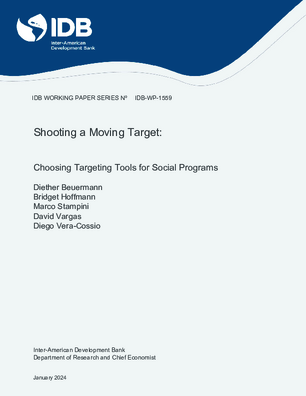Shooting a Moving Target: Choosing Targeting Tools for Social Programs
Date issued
Jan 2024
Subject
Policy Making;
Social Welfare;
Extreme Poverty;
Social Protection;
Diversity and Inclusion;
Budget;
Labor Market;
Social Safety Net;
Poverty;
External Shock
JEL code
I38 - Government Policy • Provision and Effects of Welfare Programs;
D31 - Personal Income, Wealth, and Their Distributions;
D63 - Equity, Justice, Inequality, and Other Normative Criteria and Measurement
Country
Colombia
Category
Working Papers
A key challenge for policymakers is how to design methods to select beneficiaries of social programs when income is volatile and the target population is dynamic. We evaluate a traditional static proxy-means test (PMT) and three policy-relevant alternatives. We use a unique panel dataset of a random sample of households in Colombia's social registry that contains information before, during, and after the 2020 economic crisis. Updating the PMT data does not improve social welfare relative to the static PMT. Relaxing the eligibility threshold reduces the exclusion error, increases the inclusion error, and increases social welfare. A dynamic method that uses data on shocks to estimate a variable component of income reduces exclusion errors and limits the expansion in coverage, increasing social welfare during the economic crisis. We consider these targeting metrics together with the curvature of governments social welfare function and budgetary and political constraints.
Generative AI enabled




